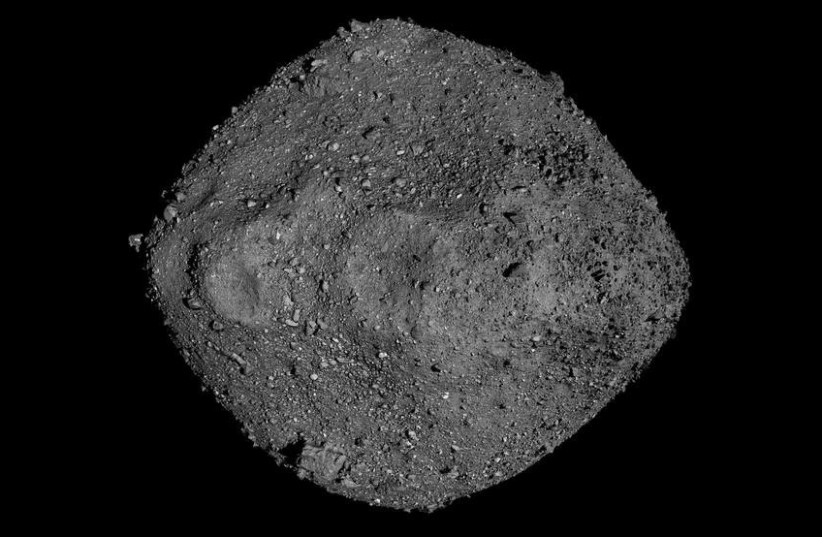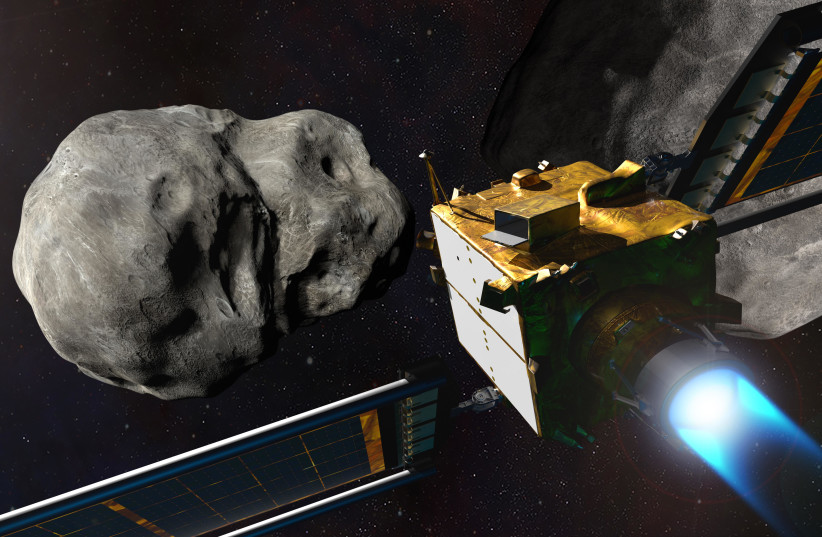An asteroid just bigger than an elephant is set to pass by the Earth on Wednesday, December 14, according to NASA's asteroid tracker.
The asteroid in question has been designated 2022 XX, and it will follow up on fellow asteroids 2021 XS4 and 2022 XY, both of which are larger, according to the Center for Near-Earth Object Studies (CNEOS) at NASA's Jet Propulsion Laboratory (JPL).
How big is the asteroid coming toward Earth in 2022?
According to NASA's calculations, the asteroids that are set to pass by the Earth on Wednesday are all small.
The most notable of these is asteroid 2022 XX, which has an estimated diameter of as small as 4.9 meters, just a bit taller than the height of an average adult elephant.

To put that into a more human scale, one of the most notable "big men" to ever walk the Earth is Andre Roussimoff, better known as Andre the Giant, a professional wrestling legend and famous for his iconic role in the classic fantasy film The Princess Bride.
Andre suffered from acromegaly, a form of giantism, and is believed to have been as much as 2.24 meters in height, or seven feet, four inches, though this is debated.
In other words, asteroid 2022 XX would be a little over twice the size of Andre the Giant.
To use another human example, one of the most famous "small men" in history was French Emperor Napoleon Boneparte, who history has remembered as being incredibly short.
This was not actually true, he was of average height at around 1.6 meters. Regardless, this means the asteroid is over three times the size of Napoleon Boneparte.
The other two asteroids, however, are much bigger – though not big enough to actually pose any concern.
Asteroid 2021 XS4 clocks in between 17 meters and 38 meters in diameter, while 2022 XY measures around 20 meters to 45 meters wide.
Will an asteroid hit Earth in 2022?
Long story short, no, none of these asteroids have any chance of hitting the Earth.
However, the elephant-sized asteroid will be cutting it close.
According to NASA, asteroid 2022 XX will make its close approach to Earth at a distance of just a little over 200,000 kilometers away from the Earth.
This is actually cutting it somewhat close.
To put this distance in perspective, the Moon orbits the Earth at an average distance of 384,000 kilometers. Certainly, this is considerably closer, even when not put on a cosmic scale.
However, it is still quite some distance away from Low Earth Orbit, where the International Space Station is located, and from Medium Earth Orbit, which is where many satellites are located. But either way, it is still touching it close.
But all of that is irrelevant because even if this elephant-sized asteroid managed to beat the odds and somehow alter its trajectory to head straight into the Earth's atmosphere, it wouldn't result in any harm.
What would happen if the asteroid actually hit the Earth?
According to research from the Davidson Institute of Science, the educational arm of Israel's Weizmann Institute of Science, an asteroid 140 meters in diameter or more would release an amount of energy at least a thousand times greater than that released by the first atomic bomb if it impacted Earth.
An even larger asteroid that's over 300 meters wide – like the Apophis asteroid – could destroy an entire continent. An asteroid over a kilometer in width – like asteroid 138971 (2001 CB21), which passed the Earth in early March 2022 – could trigger a worldwide cataclysm.
An asteroid twice the size of NBA legend Shaq may seem somewhat threatening, but in practice, it is nothing like these heavy hitters and doesn't stand a chance against the might of Earth's atmosphere.
Upon making contact with the atmosphere, the asteroid would basically burn up or explode. It might result in a nice visual display, but damages will be almost impossible, and any that do happen will be incredibly minor.
The other two asteroids are a bit bigger, and could maybe cause some level of damage, but it would still be on a smaller scale and nothing apocalyptic.
None of these asteroids would have caused serious destruction if any, should they impact the Earth, and they would likely burn up or explode in the atmosphere.
But as for the question of whether an asteroid will ever hit the Earth in 2022, the answer is yes. Or rather, it already happened twice.
Back in March 2022, a small asteroid around half the size of a giraffe known as 2022 EB5 hit the Earth just hours after its discovery. But given how small it was, it didn't exactly result in any damage.
More recently, in late November 2022, tiny asteroid 2022 WJ1 harmlessly exploded into fragments that scattered around Lake Ontario. NASA had predicted that this small meter-long asteroid would impact at this location and new there wouldn't be any harm from it.
When is the next asteroid predicted to hit the Earth?
Not for a very, very long time, at least in terms of apocalyptic-level collisions.
NASA has checked the numbers. According to them, Earth is safe from any catastrophic asteroid impacts for the next century, meaning no asteroid-induced Armageddon is on its way.

Which asteroid could potentially hit Earth?
At this moment, scientists don't know for sure. However, there are a few candidates for the most dangerous asteroid for the planet.
One of the most dangerous asteroids at the time of writing is the gigantic 500-meter-wide asteroid Bennu, which has an orbit that can cross with Earth's own.
If this asteroid impacted the Earth, the result would be catastrophic – but as far as NASA is aware, this won't be for a long time, if ever.

Do we have any way to stop an asteroid from hitting the Earth?
We just might, thanks to the hard work of scientists around the world.
The field of planetary defense is specifically organized to find ways of keeping the Earth safe from asteroids and scientists at NASA and across the globe are hard at work trying to do just that.
Most notably, this has involved pioneering the exciting technique of asteroid deflection, which uses kinetic energy through vehicular collision to ever so slightly change an asteroid's orbital path, meaning it would, in theory, no longer be set to crash into Earth but instead fly past it.
In layman's terms, NASA decided to make a spacecraft punch an asteroid to make it move out of the way.
In fact, that is exactly what recently happened in September in NASA's landmark Double Asteroid Redirection Test (DART) Mission, which tested out this theory on a faraway asteroid Dimorphous in the Didymous system.
And according to the results, the DART Mission was a success, managing to alter the asteroid's orbit.
And NASA isn't alone in this either. China is also getting ready to test out its own asteroid deflection mission, set to launch in 2025.
All in all, it seems that humanity is working on building the arsenal it needs to tame the asteroid menace lying in space, the final frontier.
